Foodies (myself included) can be really annoying. Especially the obsession with details of the provenance of ingredients. I don’t need to know what species of leaves are in the mulch that fed the grass that fed the lamb that I eat.
One foodie principle that I endorse, though, is the locavore concept, the idea that it is beneficial to use local ingredients and to celebrate local cuisine. Well, we don’t grow wheat here in the Bay Area, but my bake today is decidedly local to the Bay Area.
The recipe for this miche was developed at San Francisco Baking Institute in South San Francisco; the flours are produced to the specifications of, and distributed by, Central Milling Company in Petaluma; and the whole shebang was put together right here, just a mile from the Golden Gate, by a middling local baker in a worse-than-middling local oven.
The SFBI miche formula has been much touted in the last few weeks, and can be found in Brother David’s recent blog post (http://www.thefreshloaf.com/node/21644/miche-hit). Many of you have baked this formula, and have been pleased with it. I followed the formula, except I used 50% Central Milling Organic Type 85 flour and 50% Central Milling Organic Artisan Baker’s Craft flour (a white flour, enriched with malt, that I’ve been happily using for a range of breads). I used Bob’s Red Mill Wheat Germ (ok, that’s from way up in Oregon).
The dough behaved nicely in mixing. I found it very slack and sticky, like a high-hydration baguette dough. Indeed, it was pretty difficult to form the boule as my floured hands kept sticking to the dough. I either succeeded or failed to properly form a tight boule; I gave up trying at a certain point, and plopped it in a genuine SFBI linen-lined proofing basket.
After 15 hours in the fridge, and 90 minutes on the kitchen counter, the dough ball was very nicely risen, and the poke test indicated proper proofing.
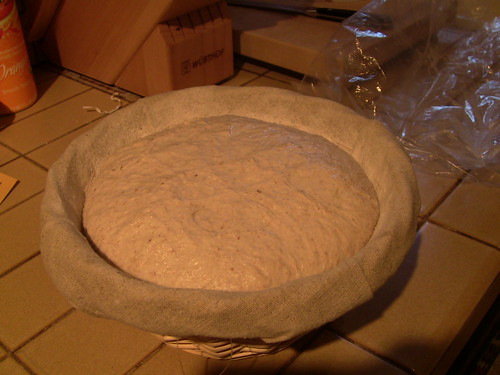
The loaf sprung up nicely in the steamed portion of the bake. I baked at 450 F for 65 minutes total, and the internal temperature got to 210 F. The crust is near burnt in places. My oven is considerably hotter at its top and this loaf was close to the top (no room to use a lower shelf). Next time I’ll try a slightly lower temperature. Still, not a bad looking bread, and nicely crackled.
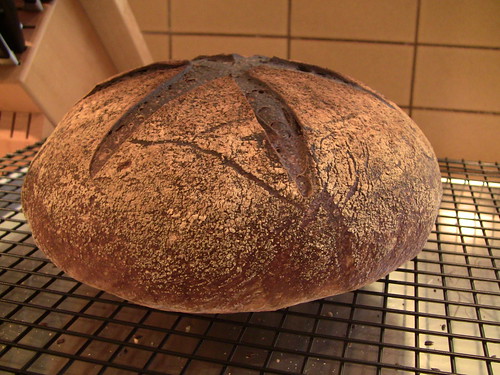
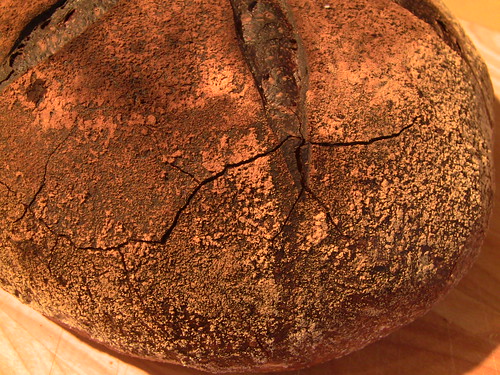
The crumb texture and flavor are awesome—very tender and airy, and complex, sour and toasty-wheaty taste. I can’t say I notice the wheat germ, compared to the last miche I made using 100% Type 85 flour. The flavor of the crust is just a tad past “bold”, verging on burnt. But, this is a really yummy bread.
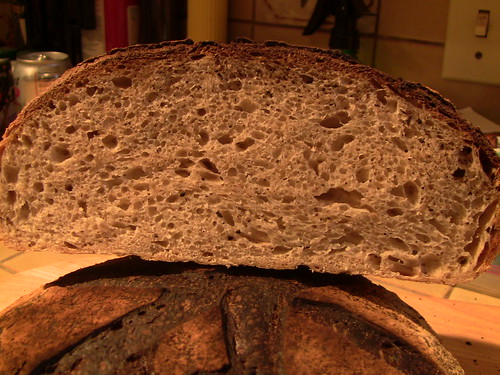
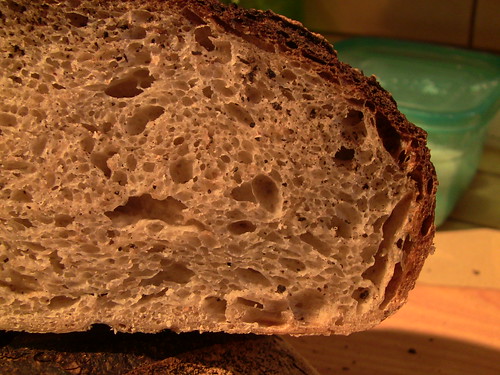
So this was the last of a three-bake weekend, producing also a nice Cranberry-Walnut bread and some tasty “Bearguettes”, all described in my previous blog post (http://www.thefreshloaf.com/node/21860/when-cat’s-away-mouse-bakes…-lot)
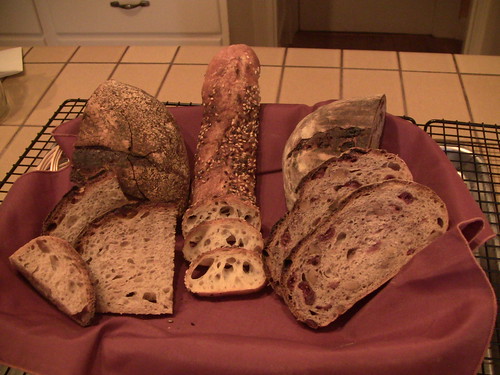
Happy Baking, all!
Glenn







